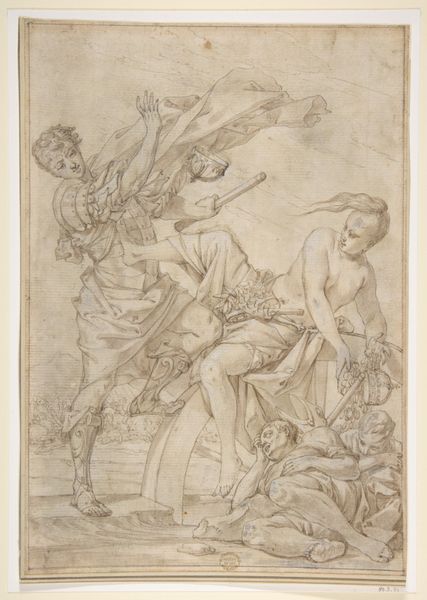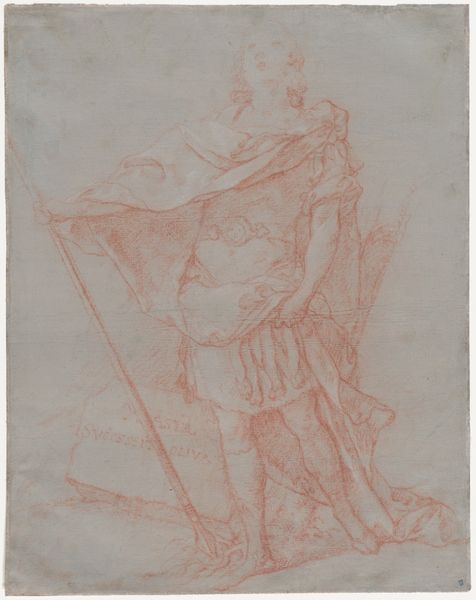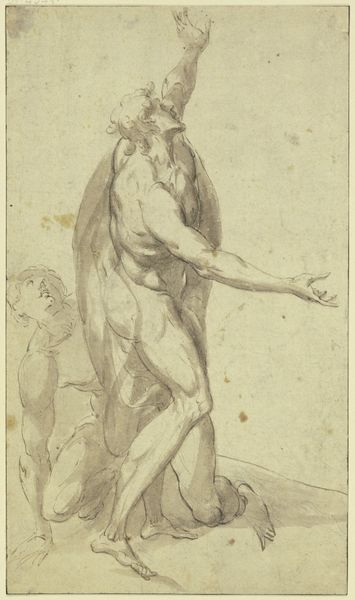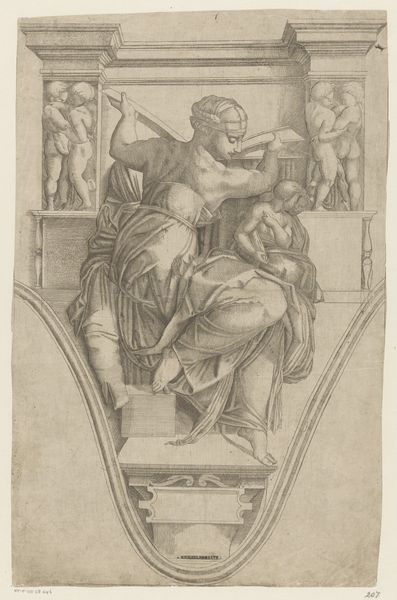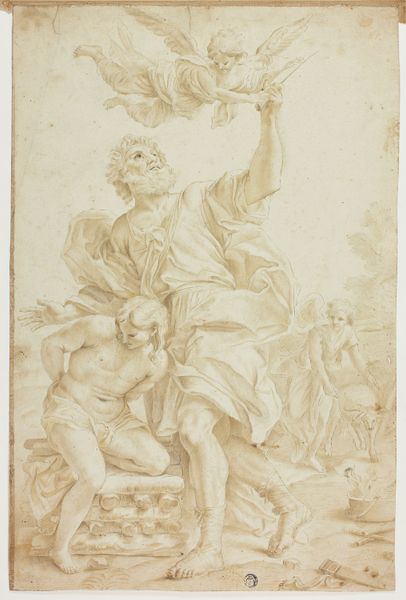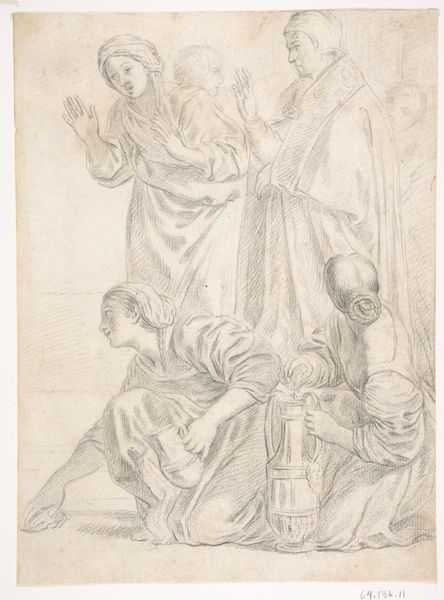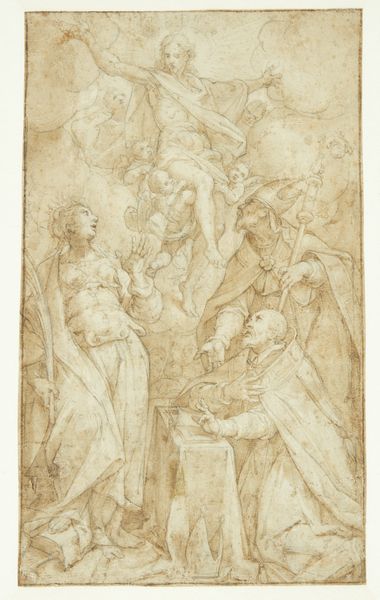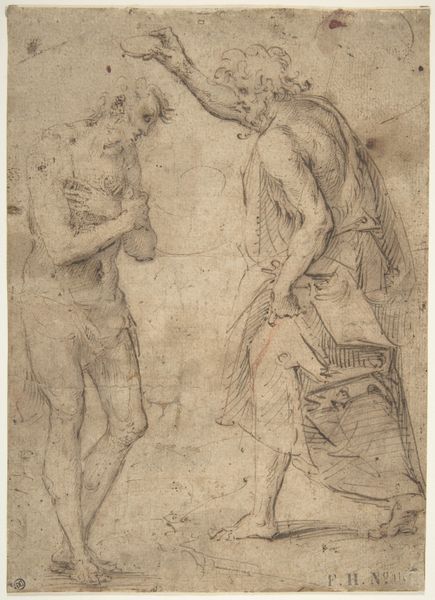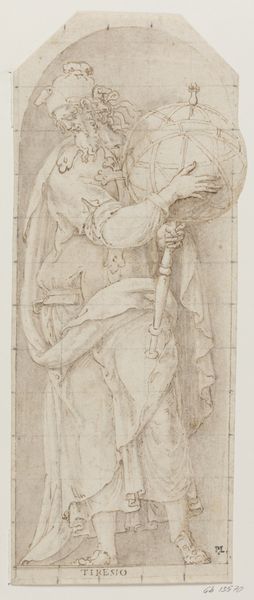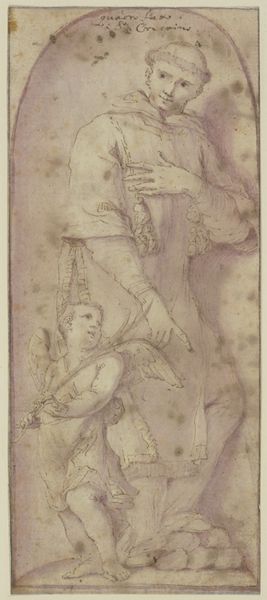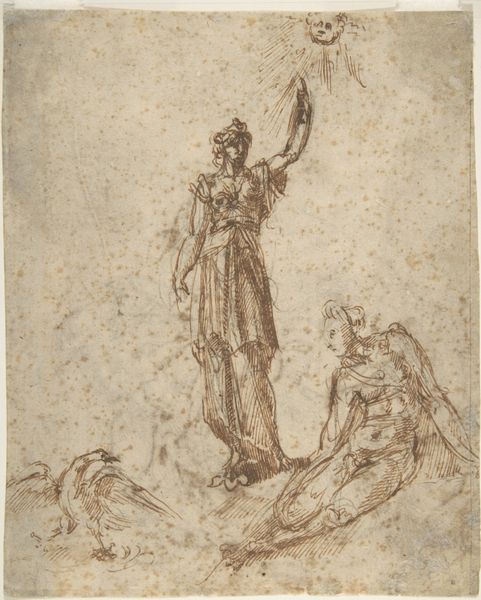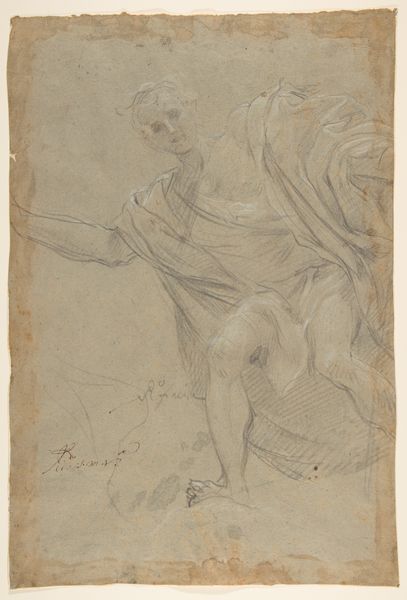
drawing, pencil
#
drawing
#
baroque
#
figuration
#
pencil
#
history-painting
Dimensions: 355 mm (height) x 235 mm (width) (bladmaal)
Curator: Look closely at Hendrik Krock's pencil drawing, "Standing Soldier and Kneeling, Pointing Youth," believed to have been created sometime between 1671 and 1738. Editor: My first impression is that it is an evocative composition despite the sketch-like quality. The figures' gestures convey a distinct narrative—something heroic yet perhaps fraught with tension. Curator: Indeed. The standing soldier, adorned in armor, appears almost stoic, while the kneeling youth passionately gestures, perhaps pleading or directing. Krock's choice of stark, contrasting figures speaks volumes. What do these characters represent? The soldier’s garb immediately situates him as a figure of authority. It's the embodiment of power. Editor: And who exactly is the empowered figure protecting and defending? And against what? He isn’t even looking at what is so emphatically being called out by the other figure. I agree there's a contrast, perhaps indicative of class difference or social status; there is an inequity on which the entire scene seems to hinge. Curator: Krock, working within the Baroque tradition, might be exploring archetypes of leadership and obedience, power and supplication, with visual motifs passed down from the Classical age. Note the use of light and shadow. Editor: Right. Baroque art often used these contrasts to highlight dramatic moments. Are we to believe there are two easily separated characters, good/bad, powerful/powerless? Or is Krock urging us to reflect on their relational being, how one only exists with the presence of the other? That perhaps the man in armor's authority can only exist by pointing in sharp relief to the kneeling one. Curator: Perhaps, given its nature as a study or sketch, Krock might have been teasing out his ideas, searching for symbolic arrangements to carry meaning. What narratives resonate through this encounter across the ages? The military-esque attire the central standing figure is wearing is not accidental, its use here has everything to do with it! Editor: Ultimately, it challenges us to unpack these dynamics and question what seemingly disparate positions mean both individually and intersectionally. This piece is much more than a simple depiction of two figures. Thank you for that insight!
Comments
No comments
Be the first to comment and join the conversation on the ultimate creative platform.
